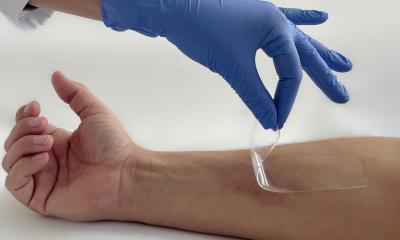Infections
Recommendations for improved management of CDI
A first of its kind expert consensus report on Clostridium difficile infection (CDI), contributed to by more than 1,000 healthcare professionals across Europe, has been presented today at the Healthcare Infection Society (HIS) International Congress in Lyon, France. The consensus report aimed to identify a set of expert views on CDI management, in order to determine attitudes to diagnosis, treatment and outcomes of CDI and to identify perceived unmet clinical needs.
Based on the consensus scores of the 1,047 respondent clinicians, recommendations have been suggested to further develop CDI services to ensure appropriate diagnosis and treatment strategies are applied across all healthcare settings in Europe. Agreed recommendations include;1
- Implementation of clearly defined algorithms for stool specimen selection, collection and testing
- Better definition of how optimal CDI treatment can be planned for patients with co-morbidities
- Improved antibiotic stewardship, including education for all healthcare professionals and ensuring national policies warrant consistent surveillance, prevention, diagnosis and treatment of CDI across Europe
Dr Nicola Petrosillo, Italy, commented: “The biggest problem we face in treating CDI is recurrence. Not only does recurrent CDI cause increased patient suffering, but it also significantly raises healthcare costs. A German study has shown that costs for treating CDI patients are over €7,000 more than the costs for treating patients without CDI. The recommendations put forward as a result of this survey could help to ensure appropriate diagnosis and treatment strategies are applied at a national and European level to improve patient outcomes and reduce the economic burden of this potentially fatal disease.”
A consortium of leading European experts prepared a series of 29 statements representing their collective views on the diagnosis and management of CDI in Europe. Consensus statements focused specifically on diagnosis of CDI; definitions of severity; treatment failure, recurrence and its consequences; infection prevention and control interventions; antimicrobial stewardship and education; and national CDI clinical guidance and policy.1
Questionnaires were completed by 1,047 clinicians involved in managing CDI from Germany, France, Spain, Italy, Sweden and the United Kingdom. The clinicians, from specialities such as infectious diseases, internal medicine and intensive care, indicated their levels of agreement with each of the statements. Levels of agreement exceeded the 66% threshold for consensus for 27 out of 29 statements (93.1%), indicating strong support for the majority. Variance between countries and specialities was analysed and showed strong alignment with the overall consensus scores.1
Other recommendations resulting from the consensus include strengthening the definitions for the severity of CDI, in particular severe and non-severe CDI; increased collaboration of hospitals and community-based health and social care services to improve CDI management; and appropriate resourcing and robust application of infection control interventions to limit the transmission of CDI.1
“Patients who suffer from CDI tend to be those who are already extremely vulnerable, such as cancer patients, people who have received immunosuppressants or antibiotics, and those who have had recent surgery,” said Doctor Simon Goldenberg, Guy’s and St Thomas’ NHS Foundation Trust, London. “This survey is important because it identifies the views of healthcare professionals who are actively involved in the day-to-day testing, diagnosis and treatment of CDI and who are responsible for reducing transmission and recurrence rates.”
CDI is one of the most common causes of antibiotic-associated diarrhoea and severe cases can lead to bowel surgery and even death.2 Hospital patients with CDI are up to three times more likely to die in hospital (or within a month of infection) than those without CDI.3,4 Recurrence is a major challenge in CDI treatment, 25% of CDI patients suffer a recurrence within one month8,9,10 and patients who have already had one recurrence have a 40% risk of a further episode of CDI.5
1. Aguado, J.M et al. The Consensus Views of European Healthcare Professionals: Addressing Clostridium difficile infection. Poster presented at HIS 2014.
2. Ananthakrishnan AN. Clostridium difficile infection: epidemiology, risk factors and management. Nat Rev Gastroenterol Hepatol. 2011;8:17-26.
3. Oake N, et al. The effect of hospital-acquired Clostridium difficile infection on in-hospital mortality. Arch Intern Med. 2010;170:1804–10.
4. Hensgens MP, et al. All-Cause and disease-specific mortality in hospitalized patients with Clostridium difficile infection: a Multicenter Cohort Study. Clin Infect Dis. 2013;56:1108–16.
5. Kelly CP, LaMont JT. Clostridium difficile – more difficult than ever. N Engl J Med. 2008;359(18):1932−1940.
Source: Press Release Ruder Finn and Astellas Pharma EMEA
18.11.2014











